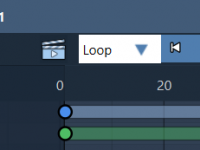How to Select Alpha Helices and Beta Sheets in SAMSON Using NSL
When Atoms Move: Capturing Trajectories in SAMSON Without Losing Your Work
How to Design Custom Polymer Sequences with Precision

Designing polymers with specific repeating units—especially when bond types matter—is a common challenge for molecular modelers working on materials science, drug delivery, or bioengineering applications. While small molecules can be drawn fairly quickly, building realistic polymer sequences with chemically accurate…









